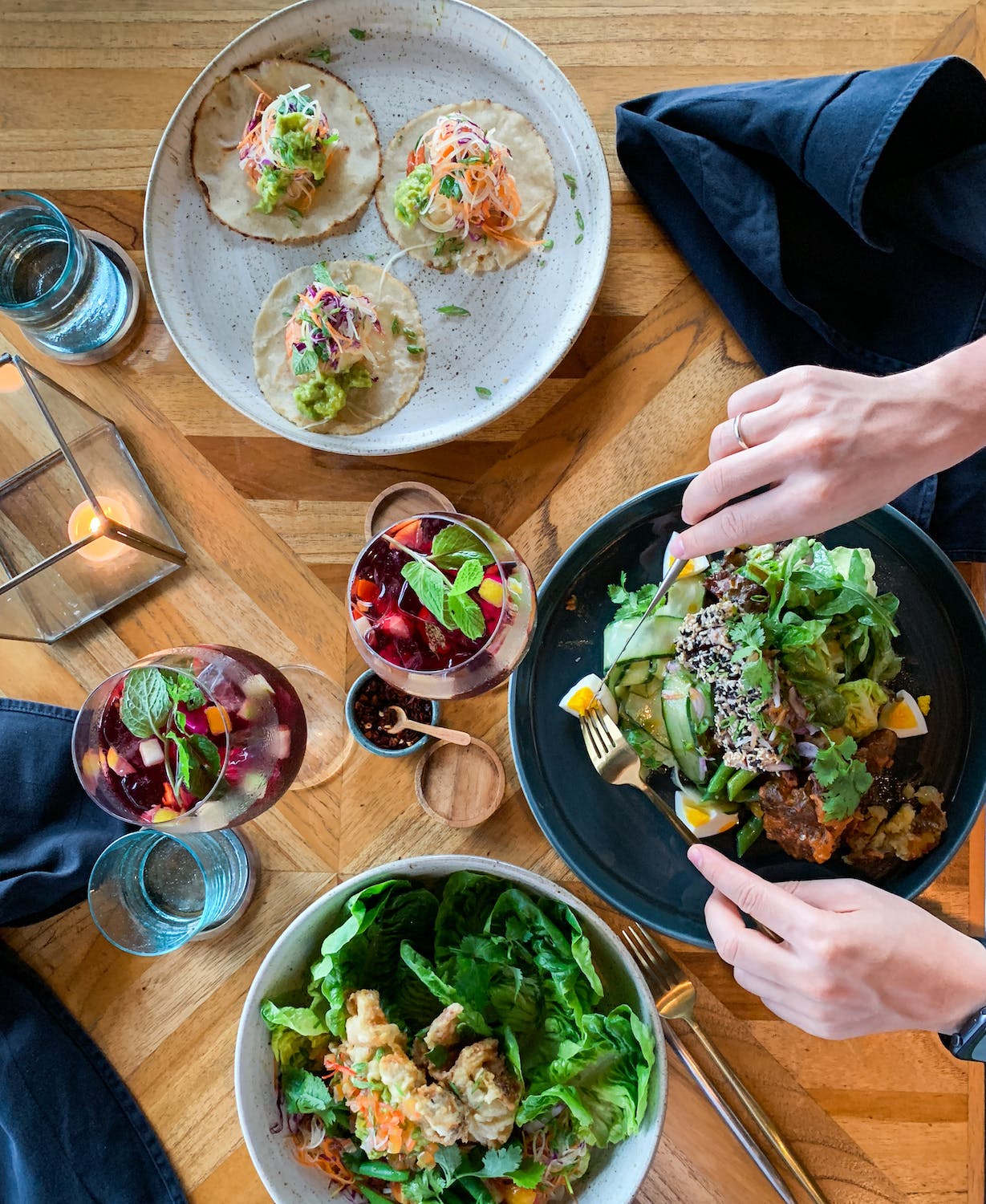Are you tired of sacrificing your health for the sake of saving money? Do you want to eat nourishing meals without going over budget? Look no further! In this blog post, we’ll give you all the tips and tricks on how to eat healthy while still keeping your wallet happy. From meal planning to smart grocery shopping, we’ve got you covered with practical strategies that will help you create delicious and nutritious meals without breaking the bank. Get ready to embrace a healthier lifestyle without compromising on taste or cost!
Introduction to Eating Healthy on a Budget
According to the Centers for Disease Control and Prevention (CDC), eating healthy food is important for everyone. A healthy diet can help you maintain a healthy weight, have more energy, and avoid diseases such as heart disease, stroke, and some cancers.
The CDC also says that eating healthy can be expensive. In fact, a recent study found that the average American family spends $151 per week on groceries—and that doesn’t even include eating out! If you’re on a budget, it can be hard to find room in your budget for healthier foods.
But don’t despair! There are ways to eat healthy on a budget. With a little planning and effort, you can make nutritious meals that won’t break the bank. Here are some tips to get you started:
1. Plan your meals in advance. Planning ahead can help you save both money and time. When you know what you’re going to make for each meal, you’re less likely to waste food or buy expensive convenience items.
2. Make a grocery list—and stick to it! Once you know what you need for the week, write it down so you don’t forget anything when you go to the store. And when you’re at the store, resist the temptation to buy things that aren’t on your list.
3. Compare prices before you shop. Not all stores are created equal
Setting Up a Realistic Budget for Groceries
When it comes to setting up a budget for groceries, the first step is to figure out how much you need to spend on food each week. This will vary depending on the size of your family and how often you eat out. Once you have an idea of your weekly food budget, you can start looking for ways to save money on groceries.
One way to save money on groceries is to plan your meals in advance. This way, you can make sure you are only buying the ingredients you need for each meal. Planning ahead can also help you avoid wasting food. Another way to save money on groceries is to buy in bulk when possible. This can help you save money on items that you use frequently.
Finally, it is important to be flexible with your grocery budget. If there are items that are on sale, consider stocking up on them. This can help you save money in the long run. However, don’t be afraid to try new things as well. Trying new foods can help you find new favorites that are also budget-friendly!
Tips and Tricks for Shopping on a Budget
One of the best ways to save money on groceries is to plan your meals in advance. This will help you avoid impulse buys and stick to your budget. Another tip is to cook in bulk and freeze leftovers for future meals. This can be a great way to save time and money.
Another way to cut costs is to buy in-season produce. This produce is typically cheaper and fresher than out-of-season options. Canned or frozen fruits and vegetables are also generally less expensive than fresh options.
Another cost-saving tip is to purchase generic brands rather than name brands. Generic brands often taste just as good as their more expensive counterparts, but can cost significantly less.
Finally, be sure to take advantage of sales and coupons. By planning your purchases around sales, you can save a significant amount of money on your grocery bill. And don’t forget to use those coupons!
Meal Planning Ideas
When it comes to eating healthy on a budget, meal planning is key. By taking the time to plan out your meals in advance, you can save money and make sure you’re getting the nutrients your body needs.
There are a few different ways to approach meal planning. One option is to choose one day each week to plan and prep all of your meals for the coming week. This can be a big time commitment up front, but it will save you time and money throughout the week.
Another option is to meal plan for only a few days at a time. This can be helpful if you’re short on time or if you like to have more flexibility in your meals.
No matter which approach you take, there are a few tips that will help you save money and eat healthy:
–Plan meals around sales and coupons: Check flyers for sales at your local grocery store and look for coupons for items you regularly buy. Planning your meals around what’s on sale can help you save money without sacrificing taste or nutrition.
–Buy in bulk: When meat or produce is on sale, buy larger quantities and freeze what you won’t use right away. This way, you’ll always have healthy ingredients on hand without having to pay full price.
–Make simple substitutions: If an ingredient is expensive or not on sale, try swapping it for a cheaper alternative. For example, ground turkey can be used in place of ground beef, quinoa
Creative Ways to Stretch Your Food Dollars
When it comes to healthy eating, it is often assumed that this means spending a lot of money on organic foods. While eating organic can be a great way to ensure you are getting the most nutrients possible, it is not always necessary (or affordable). There are plenty of ways to eat healthy without breaking the bank. Here are some tips and tricks for stretching your food budget while still nourishing your body:
1. Plan your meals in advance. This will help you avoid impulse buying at the grocery store and stick to only purchasing what you need.
2. Shop at local farmer’s markets or join a CSA (community supported agriculture) program. This is a great way to get fresh, seasonal produce at a fraction of the cost of what you would pay at the supermarket.
3. Purchase whole grains, beans, and other unprocessed foods in bulk. These items tend to be much cheaper when bought in larger quantities and can last awhile when stored properly.
4. Get creative with leftovers! Instead of letting them go to waste, find new ways to use up leftover ingredients. There are many recipes available online specifically for this purpose.
5. Take advantage of coupons and sales when possible. This takes a bit of extra effort, but can really help stretch your food budget further.
By following these tips, you can save money while still eating healthy and nourishing meals!
Cheap, Nutritious Ingredients
There are plenty of healthy and nutritious ingredients that won’t break the bank. Here are some tips and tricks for healthy eating on a budget:
– Shop at local farmers markets or join a CSA (Community Supported Agriculture) to get fresh, seasonal produce at a fraction of the price.
– Buy in bulk when possible and cook in large batches to save time and money.
– Incorporate beans and lentils into your diet as they are an inexpensive source of protein.
– Plan ahead by creating a grocery list and meal plan for the week. This will help you avoid impulse purchases and stick to your budget.
– Get creative with leftovers – turn them into new meals or freeze them for later.
Recipes for Budget Friendly Meals
Assuming you would like tips for budget-friendly recipes:
1. Plan your meals in advance. This will help you save money by only buying the ingredients you need for specific recipes.
2. Search for recipes that use cheaper ingredients. For example, instead of steak, try dishes that use ground beef.
3. Use leftovers! Get creative and turn last night’s dinner into a whole new meal.
4. Stretch your proteins by adding beans or vegetables to meat dishes. This will not only add more nutrients to your meal but also make it go further.
5. Get familiar with your grocery store’s sales cycles and stock up on items when they are at their cheapest
Conclusion
Eating healthy on a budget is definitely possible! With the right tips and tricks, you can create nutritious meals that won’t break the bank. We hope our advice has given you some ideas for how to make healthier choices without straining your wallet. Remember, making smart food choices doesn’t have to be complicated or expensive – just start with small changes and keep practicing until it becomes second nature. Good luck on your journey towards better nutrition!










